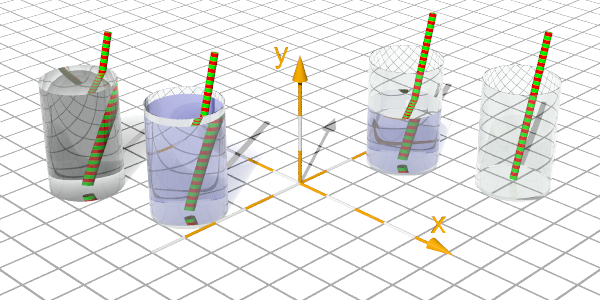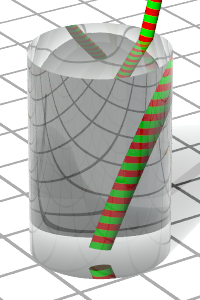Difference between revisions of "User:Le Forgeron/HowTo/Perfect glass"
< User:Le Forgeron | HowTo
Jump to navigation
Jump to search
Le Forgeron (talk | contribs) |
Le Forgeron (talk | contribs) (→Start) |
||
| Line 32: | Line 32: | ||
|} | |} | ||
===Start=== | ===Start=== | ||
| + | |||
| + | {| | ||
| + | |[[Image:LeForgeronTutoGlass1.png]] | ||
| + | |You should start with the shape of the glass, but only its outer shape. For the time being, consider a massively filled piece of glass. | ||
| + | |} | ||
| + | |||
| + | ===Time for CSG=== | ||
Revision as of 16:02, 30 September 2012
Perfect glass
Welcome, if you are tired of coincident surface in your non opaque fluid containers, it might be the right place.
An easy test, as multiple-choice questions, to check the lesson of today:
- How do you make an empty plate ?
- You select a material, a shape and combine both.
- How do you make an empty glass ?
- You select a material, a shape and combine both.
- How do you put a cake on a plate ?
- Take the plate and and move the cake to the plate.
- How do you fill a glass with a liquid ?
- Take the empty glass and pour the liquid, well put the liquid in a suitable shape and move it to the glass.
- Mu. This is a non-sense.
The right answer is 2: to achieve a glass with some liquid, you should not start with an empty glass.
If you start with a filled glass, you might end with an empty glass. But the reversal is bogus: you would get coincident surface and its noise.

|
From right to left:
|
|---|
Start

|
You should start with the shape of the glass, but only its outer shape. For the time being, consider a massively filled piece of glass. |